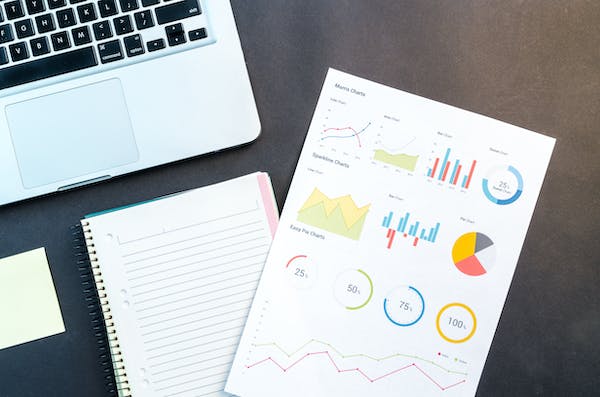Is marketing for a biscuit brand different from marketing for healthcare equipment meant for professionals?
Yes, it is.
But you aren’t here for the rhetorical questions.
You are here for the actual answers.
So keep reading to find out how B2B vs B2C marketing are different, and how they are in some ways similar.
B2B vs B2C Marketing: 8 Key Differences
Marketing to a B2B audience is different than a B2C audience. The former targets professionals who are looking for solutions that will help them with their work. While the latter is about reaching out to individuals who want to satisfy their consumer needs.
As a result, there are differences in what makes a good marketing strategy or tactic for each case. Here are the key ones.
1. Decision making: group vs individual
B2B
In the B2B world, decisions are made for the common good of the business rather than the pleasure of the individual. A B2B environment often involves multiple people from different departments, such as marketing, IT, finance, and management. These professionals have various responsibilities and perspectives within the organization, and quite often, the actions of one of them also affect the others.
Therefore, when deciding on a purchase, it’s not just one person’s responsibility but a shared responsibility. It needs to be ensured that the purchase aligns with the company’s processes and objectives as a whole.

B2C
In B2C, decision-making is a much simpler process. Whether it’s choosing a smartphone, clothing, or a vacation destination, that decision is usually a matter of personal interest, rather than the unanimous outcome of any committee. The only ‘committee’ there is in a household is your significant other.
Therefore, most decisions are up to one or two people are most. As a result, B2C decisions are characterized by a shorter decision-making cycle.
2. Ethos: logic vs emotion
B2B
In B2B marketing, reason and logic take the front seat. Business decisions are usually based on quantifiable factors such as cost savings, ROI, and efficiency: “How much money will that ERP software save us?”. “What’s the ROI of outsourcing this marketing campaign?”. These are the kinds of questions business decision-makers need to answer before making a purchase.
B2B buyers aren’t only about what they like; they’re mostly about what makes the most financial sense for their business.
B2C
On the other hand, in B2C marketing, logic is usually asleep at the wheel. Purchases are centered around personal gratification and individual interest. That said, consumers do care about factors such as cost and time. However, the most important question that lingers in the mind of the average B2C decision is “Will this purchase make me feel good?”.
The emotional experience outshines the functional utility of a product or service, which is why in B2C, marketers make a big effort to create an emotional connection with their target audience.
3. Price sensitivity and pricing: low & complex vs high & simple
B2B
B2B buyers are typically more focused on the overall value and long-term benefits of a product or service, rather than cost. Accordingly, they are willing to pay more if they decide that your solution is helping them with a particular problem.
What’s more, B2B pricing often involves complex structures due to the diversity of products, services, and customization options. In scenarios like these, you will have to provide detailed breakdowns of costs, fees, and customization options. This is why in B2B, pricing transparency is so important it shouldn’t involve any hidden fees or unexpected costs.

B2C
B2C consumers are usually more price-sensitive. Rather than long-term value, they are looking for an affordable solution and ‘a good deal’. “Does it have a discount?”. “Is it an offer?”. Those are the kinds of questions that the average B2C persona has in mind. What’s more, since they are more price-sensitive, consumers are also more likely to switch brands or retailers if prices go up.
When it comes to pricing, B2C pricing should be straightforward and easy to understand. This simplicity often involves a one-price-fits-all approach. Where things get a little more complicated in B2C pricing is subscription-based models. In these cases, consumers need to know what they are signing up for, what is the cost, and what they will receive in return. Therefore, transparent prices are as important here as in B2B.
4. Content marketing: informative vs entertaining
B2B
A B2B service or product is usually more complex than its B2C counterpart. In this fashion, the content throughout the B2B content marketing funnel should first and foremost be informative. It needs to educate the potential buyer, demonstrate industry expertise, and provide valuable insights.
These are some of the content marketing types that work best for B2B:
- Whitepapers
- Case studies
- Industry reports
- Expert guides
B2C
The connection between the brand and the buyer usually happens through emotion in B2C. For a buyer to justify a purchase, it has to make them feel good. And one of the best ways to make someone feel good is to entertain them. This is why your content should meet that demand for entertainment, engagement, and positive feelings.
These are some of the content marketing types that work best for B2C:
- Social media posts
- Videos
- User-Generated Content (UGC)
- Contests & giveaways
5. Digital marketing channels
B2B
B2B content marketing channels focus on professional networks, trade shows, email marketing, as well as direct engagement with businesses. The typical social media channel that works best for B2B is LinkedIn.
Email marketing, in particular, is a long-term strategy here and a single campaign can involve multiple workflows. It’s a channel that aims to build relationships with its audience rather than sell immediately.

B2C
B2C companies rely heavily on their websites and eCommerce platforms for their sales. The company’s website is often the central hub for all sales-related activities—not just a source of information.
For B2C, the popular social platforms to reach and connect with consumers are TikTok, Facebook, Instagram, and Pinterest.
6. Customer support
B2B
B2B tends to be more personalized in marketing and sales, and customer support is no exception. It’s not only more proactive but it also creates a higher-quality experience for the customer. The main reason behind this difference is the Customer’s Lifetime Value being higher in B2B than in B2C.
It’s true that gaining and retaining a single new customer has more value in B2B, as the purchase is usually at a higher ticket and lasts longer. As a result, more resources go to B2B customer support per the number of customers they support.
B2C
Customer support in B2C is more transactional than relationship-oriented with many customer support experiences being one-offs.
On their part, companies are focused on fast-time responses through automation and standardization. In that regard, consumers often speak to an AI or a representative with a script rather than receiving personalized support.
7. Copywriting & Messaging
B2B
Since B2B marketing appeals to logic, more than emotions, it uses a more formal and authoritative tone. When writing copy for a B2B product or service, copywriters and marketers need to show expertise and credibility. B2B copywriting is also mostly about focusing on the benefits and features.
That said, B2B copywriting doesn’t have to be dull. Using a more formal approach doesn’t mean that you should bore your audience to death. Rather, you need to keep things interesting—but with some class.
B2C
B2C requires a more casual and conversational tone. What B2C buyers typically want from their purchase is to make them feel good. Therefore, your copywriting needs to appeal to their senses, promote positive feelings, and trigger their curiosity, interest, and excitement. Make them feel something.
Similar to B2B, B2C copywriting includes many of the benefits a consumer will gain but takes it a step further. It tries to align the product or service with consumers’ lifestyles and identities. Come think of it, there aren’t many ‘lifestyle B2B brands’. Lately, B2C also employs storytelling to create a narrative that engages consumers and draws them into the brand’s world.
B2B vs B2C Marketing: 3 Key Similarities
1. Human2Human
Indeed, B2B refers to businesses, and B2C to consumers. But in reality, no “business” is buying from you. People who work in businesses do. At the end of the day, B2B, just like B2C, is still H2H—Human2Human. It’s the individuals within the organization who evaluate options, make choices, and buy your products or services. It’s still people that you are marketing to.
You also shouldn’t let the “business” aspect fool you: B2B shouldn’t be Boring2Boring. Just because you want to appeal more to logic than emotion doesn’t mean that your messaging needs to be boring. Engaging, creative, and persuasive communication is just as essential in B2B marketing as it is in B2C. Recognizing the human element is essential for effective B2B marketing.
2. Value comes first
Whether it’s B2B or B2C, successful marketing is about presenting solutions to problems. However, the problem of any professional is usually more complicated than the problem of the average individual outside of work.
This is why products and services that address business problems are usually more complex than their consumer counterparts. As a consequence, they tend to have more “features”, “modules”, and overall mechanics.
For example, Netflix is a pure B2C platform; a streaming platform. People join it to watch movies or series and have fun. The main function of Netflix is browsing content. However, B2B platforms like Ahrefs, an SEO platform, are only the means to an end. In this case, the end is increasing organic traffic for marketing purposes. What Ahrefs does is offer the necessary tools and functionalities to assist professionals in achieving their goals.
But here is what many B2B marketers do wrong: they are paying more attention to the product or service itself than the value it brings. Let’s stick to the Ahrefs example to showcase how their marketing team nails their web copy.
In their Homepage copy about the platform, they describe five of the basic toolset features. However, the main focus is not the feature per se. Rather, it’s how exactly it can help the professional.

In other words, your messaging shouldn’t be about you or some feature; it must be about the human behind the consumer or business and the value you can bring them.
3. Data & Analytics
No matter if you want to succeed in your campaigns in B2B or B2C, you first have to know your audience and create buyer personas. In B2B marketing, knowing your audience means understanding the demographics, industry, pain points, and needs of the businesses you’re targeting. It’s not just about the size of the company; it’s about who they are, what they need, and where they need it. In B2C, you’re diving into the personal lives of your consumers, their preferences, behaviors, and what makes them tick.
Data and analytics will also make personalization possible. In B2B, you can personalize your outreach to specific businesses, addressing their unique challenges and opportunities. In B2C, it’s more about delivering personalized shopping experiences and suggesting products based on past purchases.
In either case, you will have to keep track of all the necessary data and use the right analytics tools.



